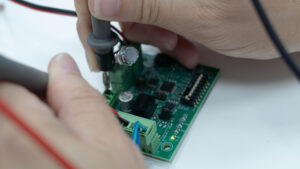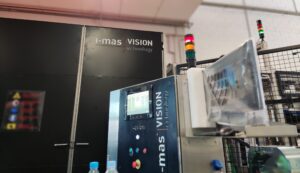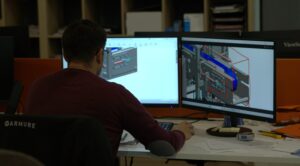In entrepreneurship, the idea of creating an innovative product can be both exciting and challenging. However, it’s not just about how good your idea is or how much money you invest, it’s the design that can really take your product to the next level.
Discover in this article the basic principles of product design that you need to know to ensure that your idea is feasible, desirable and functional. Keep reading!
1. User-Centred Design
The first and most important principle of product design is to focus on the user. This means that everything from the functionality to the aesthetics of the product must be designed with the needs and desires of the end users in mind. To achieve this, it is essential to conduct market research, create user profiles (buyer personas) and generally empathise with those who will use the product.
Tip: Before embarking on any product development, take the time to deeply understand your target audience. Ask yourself: What problem am I solving for them? How will this product improve their lives?
2. Ergonomic Design – Simplicity and Usability
The design should be simple and easy to use. A product that is overloaded with features or complicated to understand can frustrate users and drive them away. The key is to find a balance between functionality and simplicity. Each additional feature should justify its existence and contribute to improving the user experience.
Tip: Apply the ‘less is more’ principle. Prioritise essential functions that solve the user’s main problem. Conduct usability tests to make sure that anyone can understand and use the product without problems.
3. Functionality and Aesthetics in Product Design
The balance between form and function is fundamental. A product can be beautiful, but if it doesn’t serve its purpose, it will be nothing more than an ornament. Likewise, something functional but without visual appeal can go unnoticed – the challenge is to combine the two in a way that complements each other!
Tip: Work with designers who understand both functionality and the importance of good presentation. A nice design can attract users, but only if it also offers the functionality they need.
4. Iteration and Continuous Improvement
The product design process is not static. It is important to be open to feedback and be willing to iterate and improve the product continuously. The best products are those that evolve over time, adapting to changing user needs and feedback.
Tip: Launch beta versions of your product and collect feedback from early adopters. Use that information to make improvements and adjustments before a full-scale launch.
5. Technical and Economic Feasibility
Not everything that can be imagined can be produced cost-effectively. It is important to consider technical constraints and production costs from the outset. An ideal design is one that can be manufactured efficiently and cost-effectively without compromising quality.
Tip: Work closely with engineers and production experts during the design process. Make sure the product is attractive and functional, as well as feasible in terms of production and marketing.
6. Innovation and Differentiation
In a saturated market, innovation and differentiation are key. Your product must offer something that others don’t, whether it’s a unique feature, a more attractive design, or a better user experience. It’s not just about being different for the sake of being different, it’s about finding that unique feature that makes users choose your product over others.
Tip: Conduct a competitive analysis to identify areas of opportunity where your product can excel. Consider not only improving on what already exists, but also think of new ways to solve problems that others have not considered.
7. Sustainability: Design for the future
Today, more and more consumers value sustainable and environmentally friendly products. Incorporating sustainability principles into product design is not only a social responsibility, but can also be a differentiator in the marketplace.
Tip: Evaluate the life cycle of your product, from the materials used to the manufacturing process and the potential for recycling or reuse. Opt for eco-friendly materials and processes that minimise environmental impact.
Product Design at i-mas
At i-mas, we have seen first-hand how these principles can transform an idea into a market-relevant product. With 20 years of experience in product design and development and over 300 projects behind us, we know that designing a product is a creative challenge and a painstaking process. No matter how innovative an idea is, if it is not designed correctly, it will never reach its full potential.
That’s why we invite you to surround yourself with experts who can guide you along the way. At i-mas, we pride ourselves on accompanying entrepreneurs and companies at every stage of the process, from initial conception to market launch. With our help, you can be sure that your product will be functional, aesthetically pleasing, desired and valued by those who matter most: your users.
If you have an idea and you want to bring it to life in the best possible way, don’t hesitate to contact us. We want to meet you!



